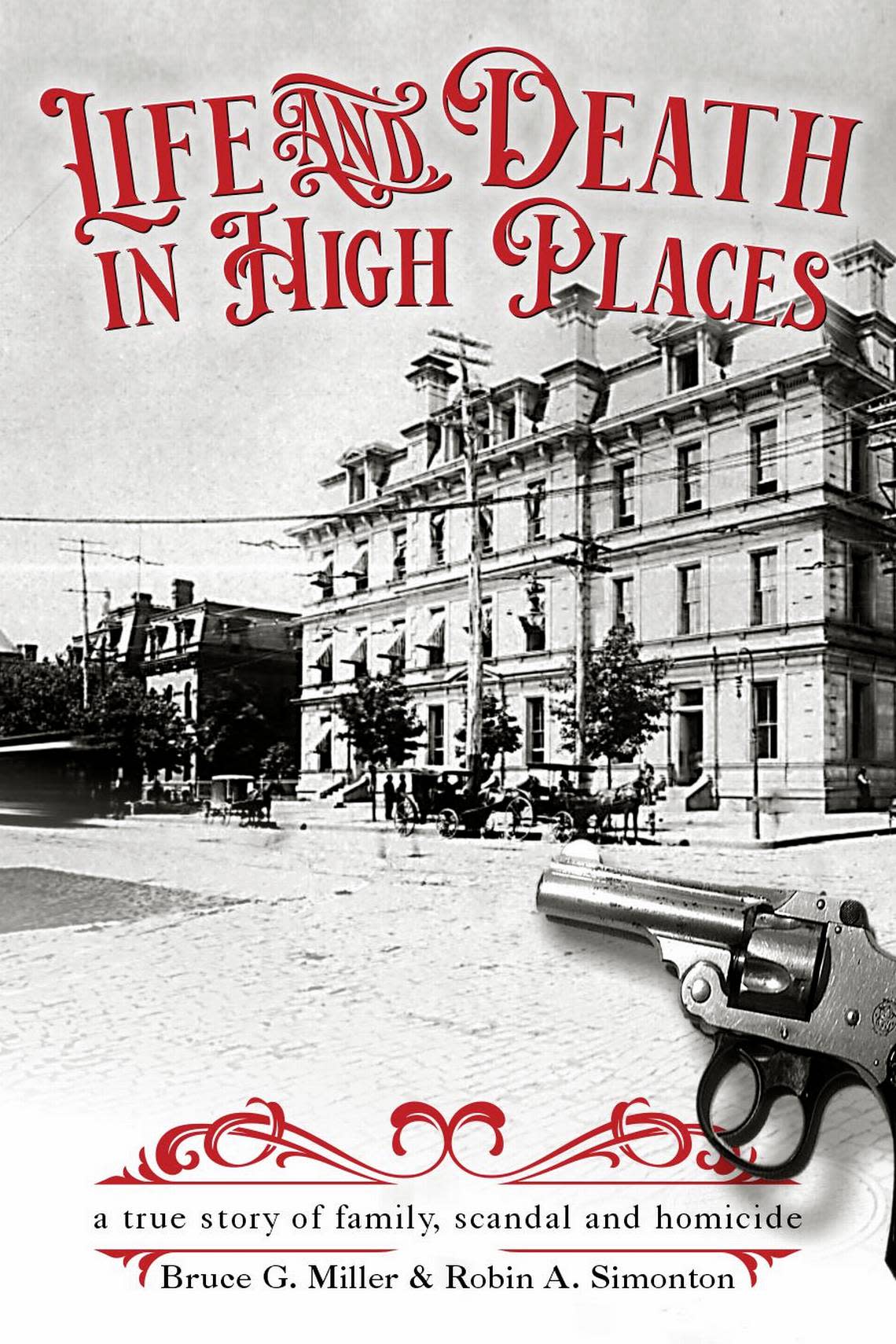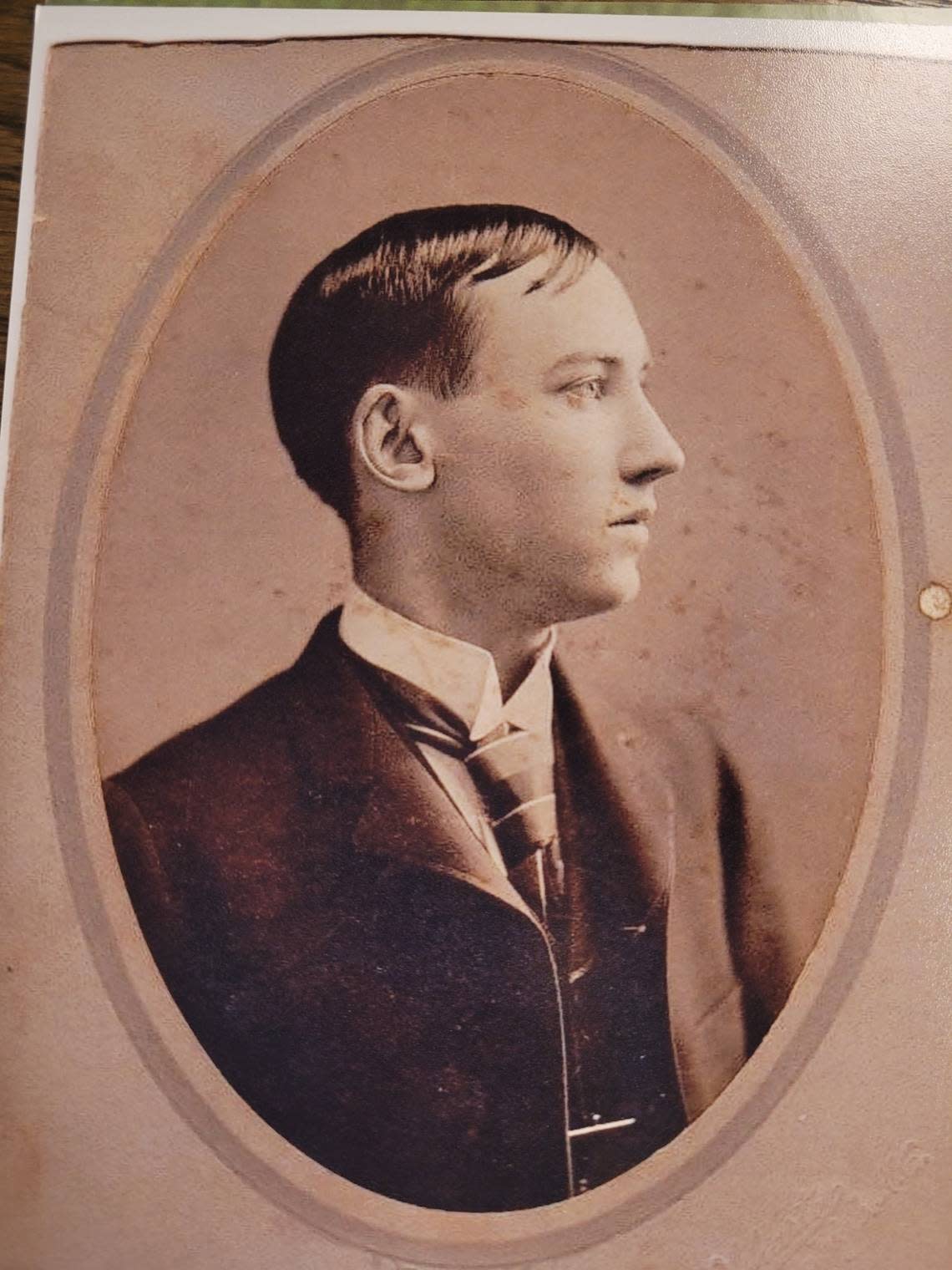A scandalous high-society slaying from Raleigh’s past is explored in this new book
One Saturday in 1903, a well-known Raleigh attorney pulled out his pistol on Fayetteville Street and shot the son of an equally prominent Baptist preacher, leaving the younger man dead on the trolley tracks before a crowd of witnesses.
The public murder on Raleigh’s busiest street, outside its downtown post office, involving two men in suits, both of them recognizable by sight, spun Raleigh into a gossip-fueled hysteria and filled front pages across the country.
What triggered this high-society murder would unwind inside a Raleigh courtroom for months. But its whispered cause — a secret love-child born in Nova Scotia — cements the story of “Life and Death in High Places,” a new history that unearths its details.

The book, self-published by Raleigh historian Bruce Miller and Historic Oakwood Cemetery Director Robin Simonton, offers the first-ever full-length account of the homicide, trial and scandal that followed.
Many of its players lie beneath tall obelisks in the downtown Raleigh graveyard, visited frequently by curious tour groups.
“This tale of Southern high society,” it begins, “a disputed marriage, a secretive offspring, a very public murder covered nationwide, extended litigation, a hidden room, a tragic suicide and ensuring family dispersals — makes for the most popular such tour offered at the burial ground.”
The Gilded Age and a fatal bullet
The story unspools at the end of the country’s Gilded Age, a time of industry titans and rapid economic expansion. It revolves around four such families in Raleigh’s circles: the Skinners, the Winders, the Tuckers and the Haywoods.
The fatal bullet, though, concerned two major players.
Ludlow Skinner grew up around a “sizable family fortune,” son of the Rev. Thomas Edward Skinner, pastor of First Baptist Church, and his wife Annie, who inherited much of her family’s dry goods riches.
He gathered nicknames suitable for a young aristocrat at his New Jersey boarding school — “Triumphant Egghead” — before finishing his degree at the University of North Carolina, marrying well and going to work for a cotton broker on Wilmington Street.

In 1903, in his early 30s, Skinner would find a foil in Ernest Haywood, an older man by 10 years and a lawyer considered “Dean of the Raleigh Bar.” From the family home at Haywood Hall, he became the city’s highest-paid attorney, specializing in wills and real estate.
The two had no known quarrel prior to Feb. 21, 1903, making it all the more astonishing to witnesses on Fayetteville Street when Haywood shot Skinner in front of dozens of witnesses.
At his trial, some witnesses would say Skinner slapped him first, knocking him backward. More would say the younger man moved his hand toward his hip before being shot — a crucial point at Haywood’s later trial, considering Skinner had a gun in his pocket.
But far more salacious speculation made the rounds in Raleigh, all of it concerning the widow Gertrude Tucker, Skinner’s sister-in-law.
Haywood had handled her estate, fueling speculation of an affair that caught fire after Tucker gave birth to a son in Nova Scotia. Haywood gave a steadfast denial of any marriage to his client, and his Raleigh law colleagues all harrumphed in agreement.
What the book says
But the book makes several damning points clear:
▪ Tucker signed her name “Mrs. Ernest Haywood;”
▪ She named her boy Ernest Haywood Jr.;
▪ In her journal, she wrote, “terrible trouble comes to Baby’s Father Feb. 21st, 1903;”
▪ and she recalled later, describing her son’s birth, “the words from Mr. Haywood, as he bent over me: ‘It is a little boy, and he looks like Beethoven!”
The boy, regardless of parenthood, went by his middle name, Eagles, and he became something of a playboy. He sputtered through an unsuccessful young life and died in 1928, holding a pistol to his head.
“Some tragedies,” the book says in summary, “... can emerge from seemingly innocuous circumstances, from events that initially bring with them, not foreboding, but joy.”
Haywood, however, would go on to a long life seemingly free of these connections.
After deliberating just 15 minutes, a Raleigh jury acquitted him of murder in 1903. He would resume his law practice and, as an elderly man in 1939, become the first Tar Heel to circle the Earth by airplane — taking several flights in the process.
But at least some spectators to this drama felt the matter forever open for debate and even condemnation, particularly this 1903 editorial in the Charlotte News:
“Ludlow Skinner’s blood,” it read, “cries from North Carolina soil, unavenged.”
Learn more about the book
For information on “Life and Death in High Places” and an upcoming virtual Wake County library discussion, contact Oakwood Cemetery at 919-832-6077.
